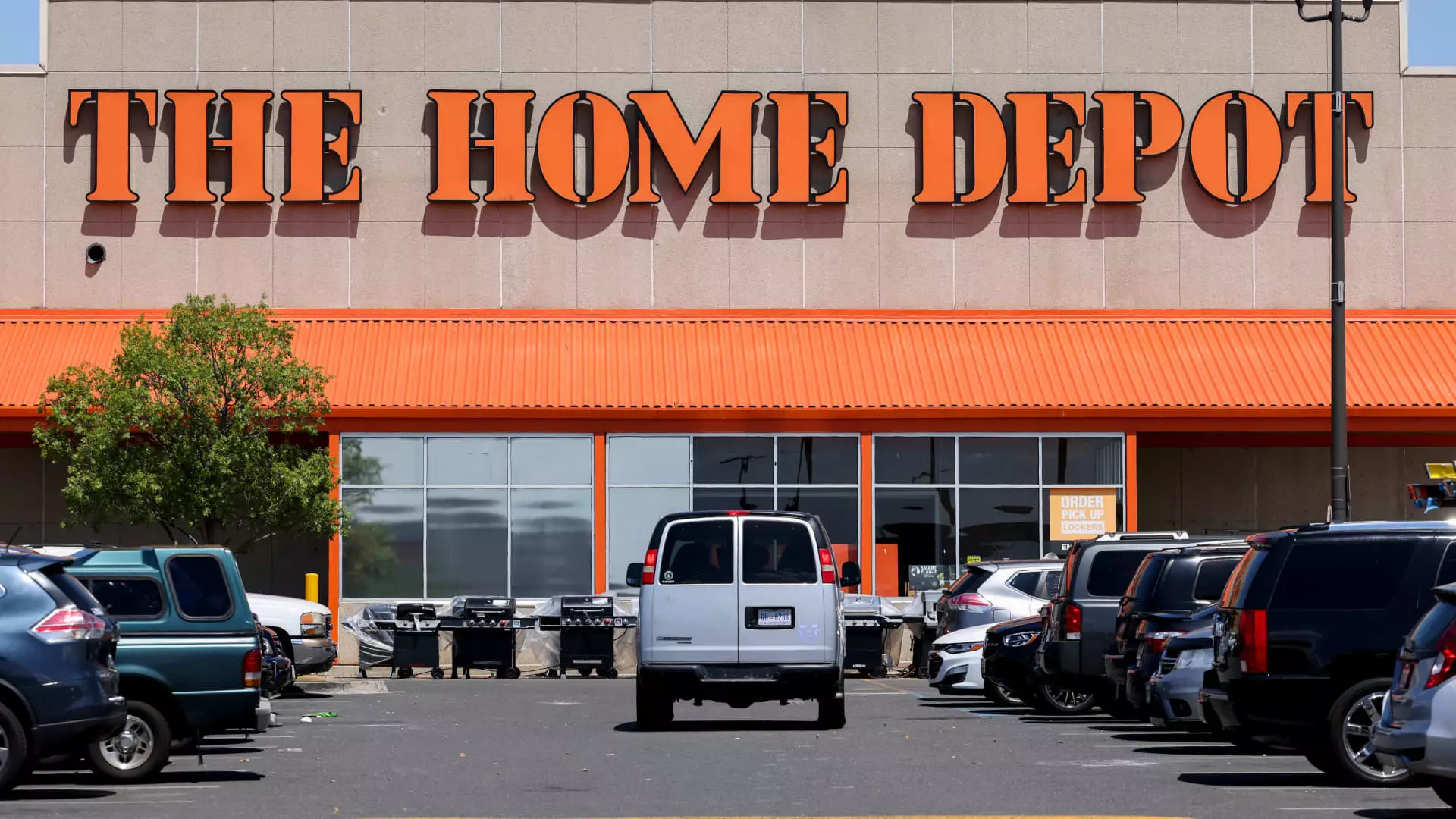The year 2024 was undeniably tumultuous for Home Depot, characterized by soaring interest rates and a consumer market rife with apprehension. Initially, the economic environment hindered consumer spending on major home improvement projects, casting a shadow over the company’s performance. High borrowing costs curtailed the enthusiasm for big-ticket item purchases, directly impacting Home Depot’s sales figures. Investors observed a subdued stock performance during the first half of the year, as increased caution from consumers reflected in the company’s financial data. However, as the year unfolded, a glimmer of hope began to emerge.
Starting in March, the market sentiment shifted as speculation regarding potential rate cuts by the Federal Reserve began to circulate. This suggestion of monetary easing saw a brief boost in Home Depot’s stock prices. However, this uplift was fleeting, with investors recalibrating their expectations by May. It was not until mid-September, when the Federal Reserve implemented a significant 50 basis point cut, that Home Depot experienced a noticeable recovery. This move invigorated optimism in the housing market, which had previously reached a staggering 30-year low in turnover. Encouragingly, Home Depot’s shares rebounded, reaching an impressive intraday peak of nearly $440 in late November, although by December, the stock had retraced by approximately 11%.
The interplay between housing market dynamics and interest rates remains crucial in shaping Home Depot’s operational landscape. As mortgage rates are intrinsically linked to bond yields, the high cost of home financing dampened enthusiasm for new home purchases, subsequently affecting Home Depot’s business prospects. Despite the supportive Fed policies, including multiple rate cuts totaling 100 basis points throughout 2024, the upward trajectory of the 10-year Treasury yield maintained elevated mortgage rates.
Nonetheless, early indicators suggest that the home improvement sector is poised for revival as we move into 2025. With recent reports signaling a nearing bottom for Home Depot’s business, industry analysts expect that rising housing turnover will ignite demand for renovation projects. Consumers will increasingly gravitate toward upgrading existing homes rather than purchasing new ones, providing a fertile ground for Home Depot’s expansive product offerings.
As stakeholders position themselves for 2025, Home Depot appears strategically aligned to capitalize on the anticipated uptick in home renovation activities. The company’s recent quarterly results indicate a promising trajectory, suggesting that improvements in economic conditions may soon translate into more robust sales figures. The prospect of decreased mortgage rates and ongoing support from the Federal Reserve augur well for this recovery, which could accelerate further as more consumers opt to renovate their homes.
In a competitive landscape, Home Depot distinguishes itself with a strong focus on the professional contractor market, driven partially by its acquisition of SRS Distribution. By enhancing its reach among industry professionals, Home Depot positions itself as the preferred supplier for both contractors and DIY enthusiasts alike. This dual market approach not only serves to broaden its customer base but also fortifies its competitive edge against rivals such as Lowe’s.
However, the road ahead is not devoid of challenges. The possibility that longer-term bond yields may continue to increase poses a threat to the expected recovery in Home Depot’s sales. Should mortgage rates remain stubbornly elevated, the anticipated rise in consumer spending on home improvement may prove slow to materialize, delaying the company’s return to growth. Additionally, external factors, including potential tariff impacts due to the company’s sourcing from countries like Mexico, Canada, and China, could raise operational complexities.
Despite these concerns, Home Depot’s resilience is highlighted by its ability to adapt and navigate prevailing market conditions. With over half of its product portfolio sourced domestically, the retailer may mitigate some potential vulnerabilities. Investors should cautiously monitor bond market trends as they continue to shape not only consumer behavior but also Home Depot’s strategic initiatives.
Home Depot’s journey through 2024 reflects both the challenges posed by a shifting economic landscape and the resilience of a leading player in the home improvement market. As the company gears up for a potentially fruitful 2025, the emerging signs of recovery may reinforce confidence among investors. Looking forward, Home Depot’s robust positioning, particularly in the pro market and its evolving business strategies, provides a compelling case for those contemplating investments. The combination of favorable mortgage trends and pent-up demand for renovations makes Home Depot a stock worth watching as we progress into the new fiscal year.

